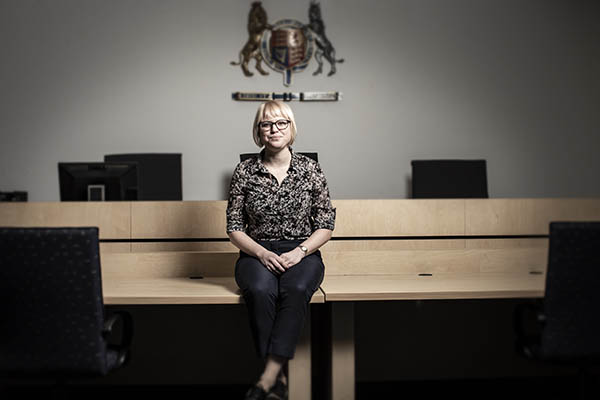Dr Andrew Zammit-Mangion
School of Mathematics and Applied Statistics
Fusing mathematics, statistics and computer science to model complex systems
Andrew Zammit-Mangion started out as an electrical engineer, giving him a solid foundation in mathematics and computer programming before he took a new direction in his PhD at the University of Sheffield. Seven years later, he proudly calls himself a statistician – and he is quickly making his mark.
Dr Zammit-Mangion fuses mathematics, computer science and statistics to model complex systems. He designs statistical methods and computer algorithms to analyse big datasets in ways that improve our understanding of society and the environment.
“That’s the nice thing about statistics,” he says. “The tools that you develop are so widely applicable.”
From national surveys to satellites, data is coming from everywhere. Dr Zammit-Mangion is focused on data collected to study processes that evolve in space and over time, such as unemployment rates or greenhouse gases.
“What sets statisticians apart is that we care a lot about uncertainty. We can tell you how confident we are of our predictions. Algorithms become much more computationally-intensive when you add that layer of complexity,” he says.
What sets Dr Zammit-Mangion apart is his skills in statistical computing, a linchpin of modern statistics, paired with his training in engineering, which means he is focused on delivering real-world results.
His PhD was focused on developing statistical modelling tools for space-time data, which at the off-hand suggestion of a colleague, he used to predict armed conflict in Afghanistan using WikiLeaks data of insurgent activity. Recognising that others could apply his methods elsewhere, Dr Zammit-Mangion shared his software online. “They could download it, run it and improve it. This is how science works.”
His work gained worldwide attention and in 2012, Dr Zammit-Mangion received the Cozzarelli Prize, awarded for a paper of his of outstanding excellence and originality published in the Proceedings of the US National Academy of Science (PNAS).
Next, Dr Zammit-Mangion turned to modelling sea-level rise, a project which to his surprise saw him working with scientists from several institutions such as NASA’s Goddard Space Flight Centre, due to the interdisciplinary nature of the research problem. He developed a state-of-the-art framework to assimilate data from multiple satellite and ground-based sensors that measure different geophysical processes to assess how much of present-day sea-level rise is driven by melting Antarctic ice sheets.
This work has seeded a five-year UK-led project funded by the European Union called GlobalMass, which will attempt to extend his methods to the global scale and take into consideration all the contributors to sea-level rise.
More recently, Dr Zammit-Mangion has shifted his focus to using ground-based measurements and satellite measurements to identify the sources and sinks of greenhouse gases. In 2018, he became an official member of NASA’s Orbiting Carbon Observatory (OCO-2) Science Team.
His next chapter, at UOW, will be to use novel machine-learning techniques to improve methods for analysing space-time data. With funding from an Australian Research Council Discovery Early Career Researcher Award, Dr Zammit-Mangion will apply sophisticated models used in artificial intelligence to improve predictions in complex environmental systems. In the case of sea-level rise, his research aims to improve risk management and mitigation policies.
“Big data is now seen as pivotal to answering scientific questions of global importance,” Dr Zammit-Mangion says.
The field is rapidly evolving as new tools are devised to interpret big data. He finds this both inspiring and motivating.
“There seems to be no end to the range of techniques and applications that can benefit from this medley of mathematics, computer science and statistics.”





